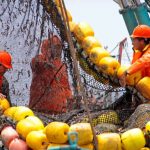Alaska Native tribal members with an educational or ceremonial permit will be allowed the limited subsistence fishing for halibut in Juneau and Ketchikan. This along with the other changes to the 5-year-old federal halibut subsistence programme has found approval with Native leaders. Subsistence fisherman Floyd Kookesh said that two years ago subsistence fishermen caught 1.5 percent of the total halibut harvest in Alaska. But it has an outsize importance for their communities.
It is said that the new rule from NOAA takes effect October 24. Harvest limits were reduced only in Sitka Sound, which has seen local depletion of halibut in recent years. The most controversial change affects “customary trade,” which allows Native subsistence fishermen to get reimbursements from the community members who eat their fish. Instead of a $400 cap, the new rule narrows reimbursements to the actual expenses of ice, food, fuel and bait.
Experts believe that the program has been controversial. Subsistence fishermen, unlike commercial fishermen, don’t have to buy any fishing quota. And they’re allowed 30 hooks and 25 halibut per person in many places, far more than the one or two halibut allowed in sport regs. Jay Ginter said that this fishery was the original fishery for halibut. Floyd Kookesh adds that he’s seen the subsistence fishermen in his hometown of Angoon risk dire weather to gather food for their families. And these days they do so at increasingly greater cost with recent fuel prices.








